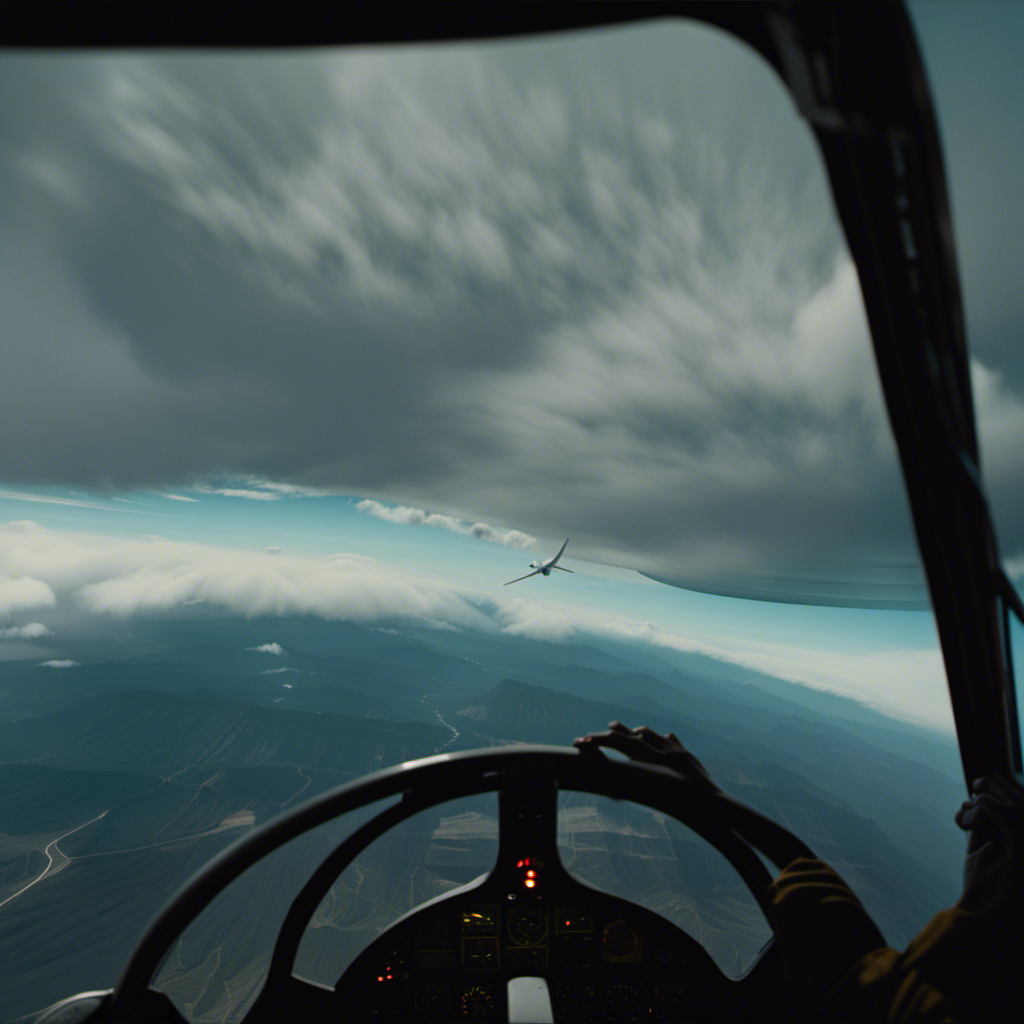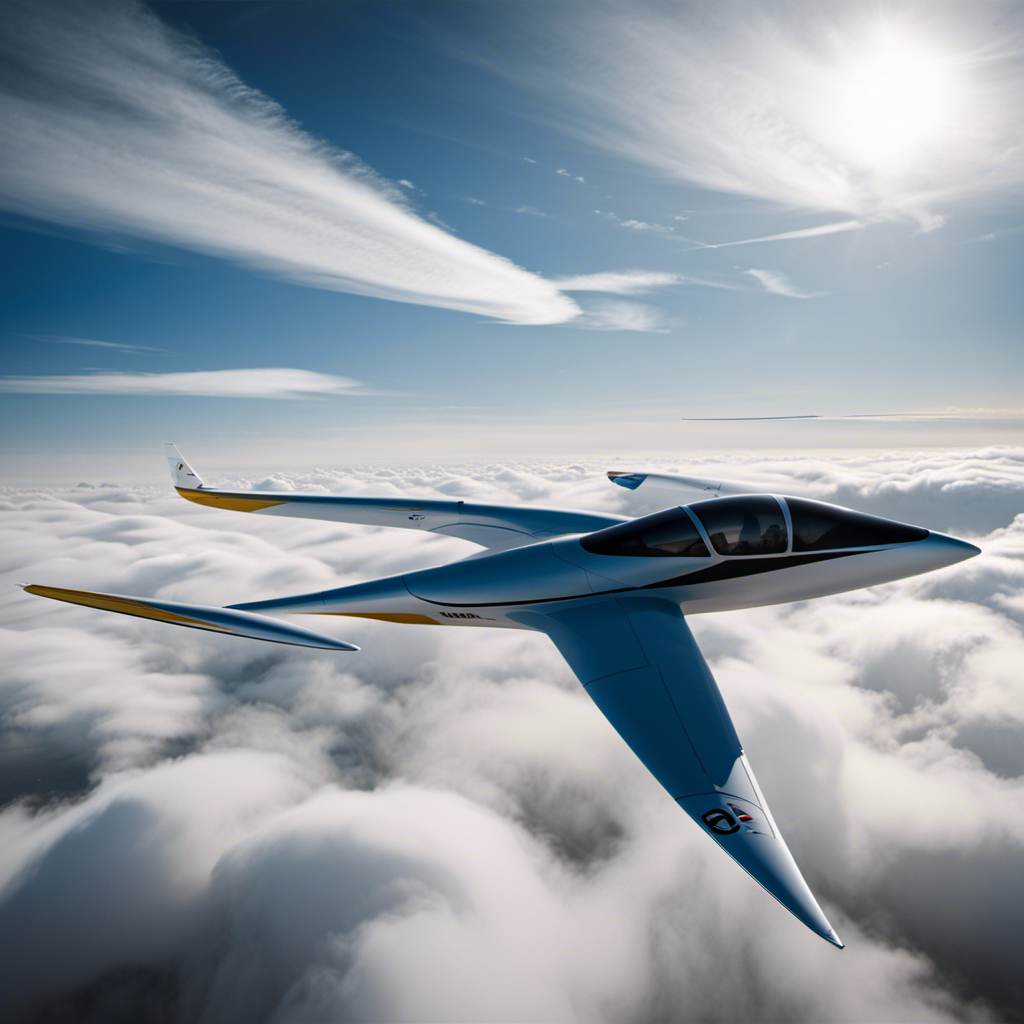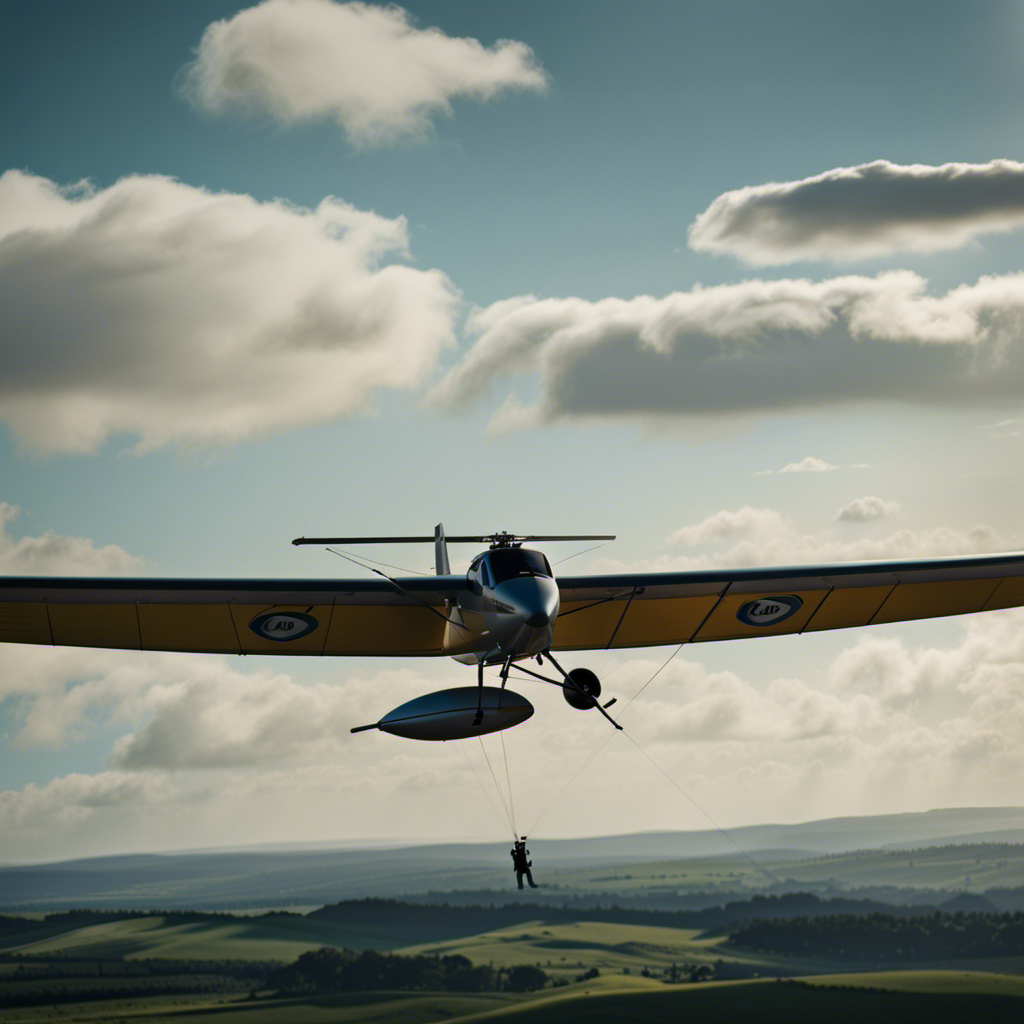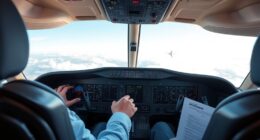Are you frequently wondering about the origin of that irritating sound while soaring high in a sailplane? Prepare to satisfy your curiosity.
In this article, we will delve into the intricate world of sailplane aerodynamics and uncover the source of that annoying noise. By understanding the role of airflow, wing design, and other factors, we can explore how this sound is generated and even discover ways to reduce it.
So, fasten your seatbelt and get ready to uncover the secrets behind the sailplane’s vexing melody.
Key Takeaways
- Excessive noise levels in sailplanes can cause distractions and decrease concentration, affecting pilot performance and decision-making abilities.
- Prolonged exposure to high noise levels can lead to fatigue, stress, and potential hearing damage.
- Sailplane manufacturers incorporate soundproofing materials and optimize engine design for noise reduction to improve pilot comfort and safety.
- Compliance with noise regulations, such as noise certification standards and noise abatement procedures, is crucial to minimize noise pollution and promote a quieter aviation environment.
Understanding the Aerodynamics of Sailplanes
Understanding the aerodynamics of sailplanes is crucial in identifying the annoying sound. When it comes to sailplanes, the key factor in their performance is the interaction between the air and the aircraft. It is important to grasp the concept of aerodynamics, which involves the study of how air flows around objects.
In the case of sailplanes, the shape of the wings and the angle of attack play a significant role. By understanding these principles, you can determine the source of the irritating noise. The way air flows over the wings, fuselage, and other components affects the sound produced.
This understanding will help us transition into the subsequent section, where we will explore the role of airflow and wind in sailplane noises.
The Role of Airflow and Wind in Sailplane Noises
To really grasp why you hear those noises while flying in a sailplane, it’s important to consider the role of airflow and wind.
As you glide through the sky, the air flows over the wings and interacts with various parts of the sailplane, causing disturbances in the airflow. These disturbances result in the generation of different types of noises.
For instance, when the air hits the leading edge of the wings, it can create a high-pitched whistling sound. Additionally, turbulence caused by the separation of airflow around the wings can produce a low-frequency rumbling noise.
The intensity and frequency of these noises can be influenced by factors such as airspeed, angle of attack, and wing shape. Understanding the role of airflow and wind is crucial when it comes to mitigating unwanted noises in sailplanes.
Now, let’s delve into the effect of wing design on noise generation.
The Effect of Wing Design on Noise Generation
As we explore the effect of wing design on noise generation, it’s important to consider how different wing shapes can impact the frequency and intensity of noises produced by the sailplane. The shape of the wing plays a crucial role in determining the aerodynamic characteristics, which in turn influence the noise generated.
Here are some key factors to consider:
-
Wing geometry: The shape and contour of the wing can affect the flow of air over its surface, leading to variations in the noise produced.
-
Wingtip design: The type of wingtip, whether it’s rounded or squared off, can influence the creation of vortices and the resulting noise.
-
Wing surface treatments: Coatings and treatments applied to the wing surface can alter the airflow and reduce noise generation.
Understanding how these factors interact is essential in designing sailplanes with reduced noise levels.
Now, let’s delve into investigating the source of the annoying sound.
Investigating the Source of the Annoying Sound
Now let’s take a closer look at where that bothersome noise is coming from. Understanding the source of the sound is crucial in order to effectively address and mitigate it. To help identify the origin, let’s examine a table showcasing potential sources of noise in a sailplane:
| Noise Source | Description | Potential Impact |
|---|---|---|
| Airframe | Vibrations and turbulence caused by the structure of the aircraft | High |
| Control Surfaces | Airflow disturbances around ailerons, elevators, and rudders | Medium |
| Propeller | Aerodynamic interactions between the propeller and the surrounding air | Medium |
| Cockpit Design | Poor insulation or gaps leading to sound leakage inside the cockpit | Low |
| Instruments | Noise generated by various instruments and avionics systems | Low |
Analyzing this table, it becomes clear that the airframe and control surfaces have the highest potential impact on noise generation. By understanding these factors, we can now delve into the subsequent section about factors that can amplify or reduce the noise.
Factors That Can Amplify or Reduce the Noise
If you want to effectively address and mitigate the noise, understanding the factors that can amplify or reduce it is crucial.
Here are four key factors that can influence the noise level in a sailplane:
-
Airspeed: The faster the sailplane flies, the greater the noise produced. As the airspeed increases, the airflow over the aircraft becomes more turbulent, resulting in increased noise.
-
Wing Design: The shape and configuration of the wings can significantly impact the noise level. Wings with smooth surfaces and streamlined profiles tend to create less noise compared to wings with rough surfaces or complex geometries.
-
Engine Noise: The type and condition of the engine installed in the sailplane can greatly affect the noise level. Well-maintained engines with effective mufflers produce less noise compared to older or poorly maintained engines.
-
Aerodynamic Modifications: Certain modifications, such as the addition of winglets or fairings, can help reduce noise by improving the overall aerodynamics of the sailplane.
Understanding these factors can guide your efforts in minimizing sailplane noise.
Techniques to Minimize Sailplane Noise
One effective way to reduce sailplane noise is by making aerodynamic modifications, such as adding winglets or fairings. These modifications help in streamlining the flow of air around the aircraft, reducing drag and turbulence, which are major contributors to noise generation.
Winglets, for instance, are vertical extensions at the end of the wings that reduce the vortices formed during flight, resulting in less noise. Fairings, on the other hand, are smooth coverings that minimize the gaps between different components of the sailplane, reducing air turbulence and noise.
Additionally, optimizing the shape of the sailplane’s fuselage and control surfaces can further reduce noise. By implementing these aerodynamic modifications, sailplane noise can be significantly minimized, providing a more pleasant and enjoyable flying experience.
Contrary to common misconceptions about sailplane noises, it is not solely the engine that produces the irritating sounds. In fact, sailplanes are often equipped with quiet electric motors or are completely engineless, yet they can still generate considerable noise due to aerodynamic factors. Understanding these factors is crucial in developing effective noise reduction strategies for sailplanes.
Common Misconceptions About Sailplane Noises
To better understand sailplane noises, it’s important to be aware that it’s not just the engine that causes misconceptions. There are several factors that contribute to the sounds heard while flying in a sailplane. Here are three key elements to consider:
-
Airflow: The movement of air over the wings and fuselage generates noise. As the sailplane glides through the sky, the air creates turbulence, resulting in various sounds.
-
Control Surfaces: Adjusting the control surfaces, such as the ailerons and flaps, produces audible effects. These movements can create vibrations and generate additional noise.
-
Structural Components: The construction of the sailplane, including its materials and design, can impact the noise levels. Certain components, like the canopy or landing gear, may produce distinct sounds during flight.
Understanding these factors can help differentiate between normal sailplane noises and potential issues.
Now, let’s explore the impact of noise on pilot performance and comfort.
The Impact of Noise on Pilot Performance and Comfort
The noise in a sailplane can greatly impact your performance and comfort while flying. Excessive noise levels can cause distractions, leading to decreased concentration and impaired decision-making abilities. This can be especially critical during critical phases of flight such as takeoff and landing.
Furthermore, prolonged exposure to high noise levels can lead to fatigue, stress, and even hearing damage. To mitigate these effects, sailplane manufacturers have implemented various measures to reduce noise, such as incorporating soundproofing materials and optimizing engine design. Additionally, pilots should wear appropriate hearing protection to minimize the risk of long-term hearing loss.
By addressing noise-related concerns, you can ensure that your flying experience is both safe and enjoyable.
Now let’s explore the noise regulations and safety considerations in sailplanes.
Noise Regulations and Safety Considerations in Sailplanes
Now that you understand the impact of noise on pilot performance and comfort, let’s delve into the crucial topic of noise regulations and safety considerations in sailplanes.
Ensuring a safe and comfortable flying experience for both pilots and passengers requires strict adherence to noise regulations and the implementation of safety measures. Here are three key aspects to consider:
-
Noise certification: Sailplanes must meet specific noise certification standards to ensure they do not exceed acceptable noise levels during flight.
-
Noise abatement procedures: Implementing noise abatement procedures, such as reducing engine power during takeoff and avoiding low-level flight over noise-sensitive areas, helps minimize noise pollution.
-
Pilot education and training: Pilots should receive comprehensive education and training on noise regulations and safety considerations to ensure compliance and promote a culture of noise reduction.
By addressing these aspects, sailplane operators can contribute to a quieter and safer aviation environment.
Now, let’s explore future innovations and research in sailplane noise reduction.
Future Innovations and Research in Sailplane Noise Reduction
Implementing advanced technology and conducting research are key factors in reducing noise levels in sailplanes.
One area of innovation is in the development of quieter propulsion systems. Electric propulsion systems, for example, are being explored as a potential solution. These systems use electric motors instead of traditional engines, which significantly reduces noise emissions.
Another area of research is focused on the design of the airframe and control surfaces. By optimizing the shape and materials used in construction, engineers can reduce aerodynamic noise generated during flight.
Additionally, advancements in soundproofing materials are being investigated to further minimize noise levels inside the cockpit.
Ongoing research and development in these areas will continue to contribute to the reduction of noise in sailplanes, ensuring a more enjoyable and peaceful flying experience.
Frequently Asked Questions
How does the understanding of aerodynamics in sailplanes relate to the annoying sound?
Understanding aerodynamics in sailplanes relates to the annoying sound by identifying the specific conditions that cause it. By analyzing factors like air flow and turbulence, pilots can adjust their techniques to minimize or eliminate the sound, enhancing the overall flying experience.
What factors contribute to the noise generation in sailplanes other than airflow and wind?
Factors contributing to noise generation in sailplanes include vibrations from the airframe, turbulent airflow around control surfaces, and the interaction between the wings and the air. These factors combine to create a cacophony that disrupts the serenity of flight.
Are there any specific wing designs that are more prone to generating noise in sailplanes?
Specific wing designs, such as those with sharp leading edges or high aspect ratios, are more prone to generating noise in sailplanes. These designs create turbulent airflow and vortex shedding, resulting in the annoying sound experienced by pilots.
How can the source of the annoying sound in sailplanes be investigated?
To investigate the source of the annoying sound in sailplanes, carefully examine the structure and components of the aircraft. Pay close attention to the wing design, control surfaces, and any potential sources of turbulence, as they may be contributing to the noise.
Are there any techniques that can be used to minimize sailplane noise other than those mentioned in the article?
To minimize sailplane noise, in addition to the techniques mentioned in the article, you can use sound-absorbing materials on the interior surfaces, such as noise-reducing insulation and padding, and install aerodynamically designed components to reduce air turbulence and noise generation.
Conclusion
To conclude, the annoying sound in sailplanes is a complex issue. It stems from the intricate interplay between aerodynamics, airflow, and wing design. Factors such as turbulence and air pressure variations may contribute to the noise. However, it is crucial to dispel any misconceptions surrounding this phenomenon. With a deep understanding of the sources and amplifiers of noise, future innovations and research can be directed towards reducing noise levels.
So, let us navigate these turbulent sound waves with an inquisitive spirit. For in silence, a sailplane truly finds its harmony amidst the wind’s symphony.
With a heart that soars as high as the skies, Aria, affectionately known as “Skylark,” is the driving force behind Soaring Skyways. Her journey into the gliding world began as a young dreamer gazing up at the soaring birds, yearning to experience the weightlessness and freedom they embodied. With years of experience both in the cockpit and behind the scenes, Aria’s commitment to the gliding community is unwavering.










